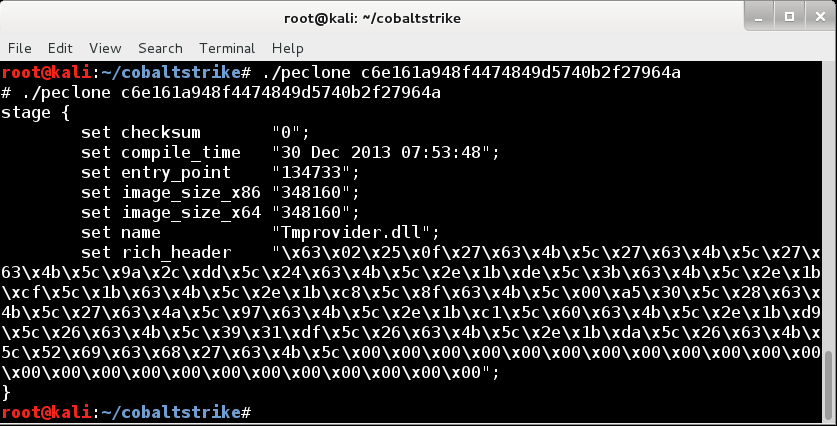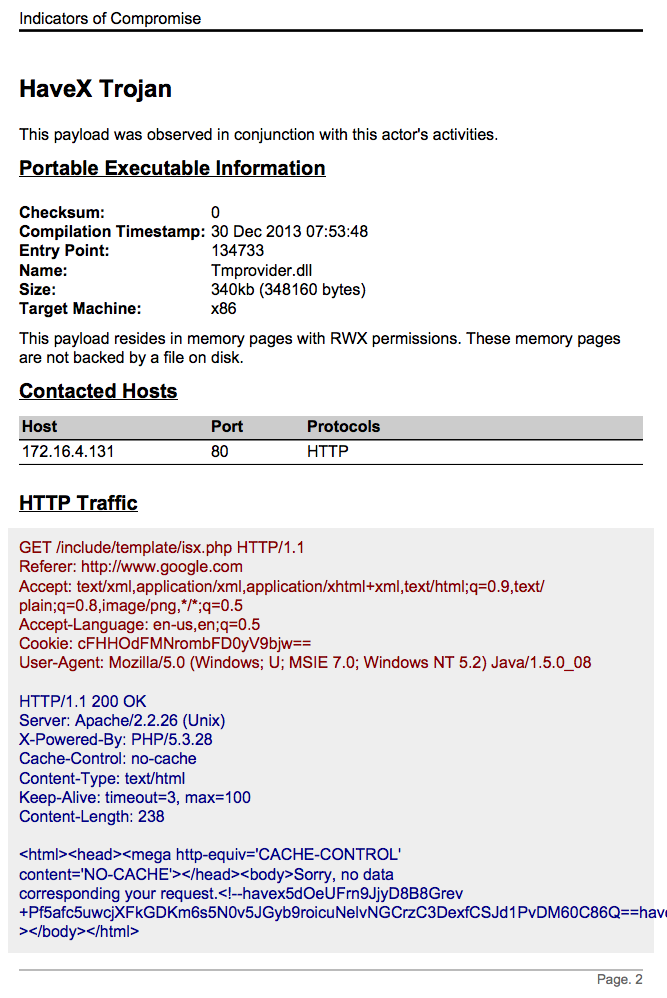Cobalt Strike 3.11 is now available. This release adds to Cobalt Strike’s in-memory threat emulation and evasion capabilities, adds a means to run .NET executable assemblies without touching disk, and implements the Token Duplication UAC bypass attack.
In-Memory Threat Emulation
One of the things that makes Cobalt Strike different is its ability to emulate multiple toolsets with one agent and one platform. Malleable C2 (2014) was the start of this. Malleable C2 focused on wire indicators because that’s what defenders could most easily observe. Today, wire indicators have their place, but defenders are just as likely to rip a DLL from memory to extract indicators and understand what they’re up against.
Cobalt Strike 3.7 introduced Malleable PE to give Beacon indicator flexibility in-memory. Cobalt Strike 3.11 takes this further.
1. Malleable C2 profiles now have the ability to specify the checksum, entry point, exported DLL name, and rich_header of the Beacon DLL.
2. This release also adds a peclone utility to Cobalt Strike’s Linux package. The peclone utility parses a DLL and reports a ready-to-use Malleable C2 stage block. This allows red teams to quickly extract and apply indicators from a malicious executable or DLL to Cobalt Strike’s Beacon.

3. The stomppe option controls whether or not Beacon’s loader stomps the MZ, PE, and e_lfanew values after loading. This option controls a common in-memory evasion tactic. Set this option to false and Beacon becomes a more obvious in-memory target.
4. Of course, flexible indicators have little utility without ground truth to give to the blue team. The Indicators of Compromise report in Cobalt Strike 3.11 now includes more information about the profiles used during the engagement. Each profile is presented as a unique “malware sample” with a summary of PE headers, contacted hosts, an HTTP traffic sample, and interesting strings.
Here’s the IOCs report with the HaveX Malleable C2 profile loaded:

In-Memory Evasions
February 2018’s In-memory Evasion course discusses heuristics to find injected DLLs in memory, explains why these heuristics work, and offers strategies to push back on these defenses. Cobalt Strike 3.11 adds more options to challenge and train defenders that use memory hunting techniques.
Less DLL, Please
One way to avoid detection as a memory injected DLL is to not look like an injected DLL at all (go figure). Cobalt Strike’s existing Malleable PE obfuscate option provides some help here. It masks Beacon’s import table and other fields in Beacon’s DLL. Cobalt Strike 3.11 takes this to the next level. Now, when obfuscate is set to true, Beacon’s Reflective Loader will situate Beacon in its new memory without bringing over any of its DLL headers.
Of course, the above raises a problem. It’s nice that the final Beacon DLL is better disguised. What about the memory that contains Beacon and its self-bootstrapping Reflective Loader? That package still has the MZ, PE, and e_lfanew values.
Set the cleanup option to true. This hint asks Beacon to release the memory associated with its loader. When this operation succeeds, your Beacon will live in-memory without the package that put it there.
Together, obfuscate and cleanup allow Beacon to live in-memory without content that screams memory-injected DLL.
Module Stomping
The above does raise another problem. What about the permissions of that memory? We still have pages with execute permissions that are not tied to a loaded module. These permissions exist in legitimate applications, but these properties are a warm flame that attracts the hunters from their cyber blinds.
Cobalt Strike 3.11 also adds module stomping to Beacon’s Reflective Loader. When enabled, Beacon’s loader will shun VirtualAlloc and instead load a DLL into the current process and overwrite its memory.
Set module_x86 to a favorite x86 DLL to module stomp with the x86 Beacon. The module_x64 option enables this for the x64 Beacon.
While this is a powerful feature, caveats apply! If the library you load is not large enough to host Beacon, you will crash Beacon’s process. If the current process loads the same library later (for whatever reason), you will crash Beacon’s process. Choose carefully.
In-memory .NET Assembly Execution
In Modern Defenses and YOU!, I advised that operators who depend on PowerShell should brush up on working without it. I also advised that payload developers, myself included, would do well to embrace the use of .NET assemblies in their platforms.
Cobalt Strike 3.11’s execute-assembly command makes good on this. This command accepts a path to a local executable assembly and runs it on the target in a temporary process. This temporary process benefits from all of your session prepping steps (e.g., ppid, spawnto, etc.). You may pass arbitrary arguments, quoted or not, to this program as if you ran it from a command shell. Scripters may build on execute-assembly with &bexecute_assembly.
This video demonstrates the Internal Monologue attack with help from execute-assembly:
Token Duplication UAC Bypass
But wait, there’s more! Cobalt Strike 3.11 adds a module that implements the Token Duplication UAC Bypass discovered by James Forshaw and originally weaponized by Ruben Boonen.
This UAC loophole allows a non-elevated process to use a token, stolen from an elevated process, to launch an elevated process of the attacker’s choosing. This loophole requires the attacker to remove several rights assigned to the elevated token. The abilities of your new session will reflect these restricted rights (e.g., you can’t interact with processes outside of your current desktop session).
This attack can bypass Always Notify. This requires that an elevated process is already running in the current desktop (as the same user). This attack also works on Windows 7 and later.
Use elevate uac-token-duplication [listener] to bypass UAC and get a session. This module does run a PowerShell one-liner to run a payload stager. Optionally, use runasadmin [command] [arguments] to bypass UAC and run an arbitrary command in an elevated context. The runasadmin command does not use PowerShell.
Check out the release notes to see a full list of what’s new in Cobalt Strike 3.11. Licensed users may use the update program to get the latest.